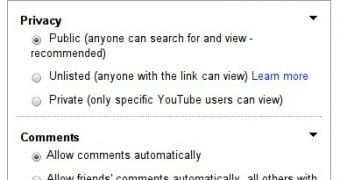The web has made it easy to share anything, from photos to links to videos. But just because it’s easy, it doesn’t mean you should do it every time. There are cases where you’d want to share something with a bunch of people, but not necessarily with the rest of the world. If you want to share a video on YouTube with a couple of friends, it’s relatively easy to do.
But if you want to share it with tens of hundreds of people, you have been out of luck, until now. YouTube has introduced a third video privacy option, “Unlisted,” which makes videos as private as they’re going to get, while still being accessible to anyone.
“With this feature, you can mark your videos as ‘unlisted.’ This means only people who have the link to the video will be able to watch it. It won’t appear in any of YouTube’s public pages, in search results, on your personal channel or on the browse page,” Jen Chen, software engineer at YouTube, wrote in a blog post.
“It’s a private video, except you don’t need a YouTube account to watch it and there is no limit to the number of people who can view it. You’ll get a link when you upload the video and then it’s up to you to decide who to share it with,” the post explained.
Until now, there have been two privacy options on YouTube. You either shared it with the world – Public –, or with clearly specified YouTube users – Private. The Private option had a 25-user limit making it useful only if you wanted to share a video with a few friends.
With the Unlisted option, the video is basically public. YouTube doesn’t restrict access to it to anyone, as long as they can find it. Because the only way to get to it is to know the link, this makes the video semi-private, since it can be assumed that, if you have the link, you’re supposed to be able to see it. It’s not the greatest defense, but it’s the best compromise between privacy, ease of use and a larger intended audience.

 14 DAY TRIAL //
14 DAY TRIAL //